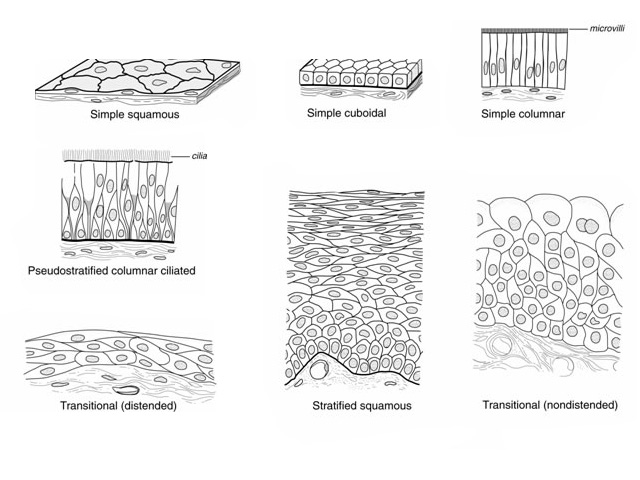Summary
Findings
All epithelia rest on a basement membrane and are classified according to the shape of the cell (i.e. squamous, cuboidal or columnar) and the number of cell layers (i.e. simple or stratified). Stratified epithelia are named according to the shape of the cell in the outermost layer (e.g. stratified squamous epithelia). Ciliated pseudostratifed columnar epithelia appear stratified because cell nuclei are seen at different levels, but all cells make contact with the basement membrane. The transitional epithelium of the urinary tract is an example of stratified cuboidal epithelium specialized to accommodate marked changes in urine volume.
Comment
It is difficult to ascertain if all cells make contact with the basement membrane at the light microscopic level, but pseudostratified columnar epithelium lining the respiratory tract has cilia on the apical surface that are readily identifiable. Transitional epithelia lining the nondistended urinary tract have "dome-shaped" surface cells.
Image Credit
Andrew P. Mizisin, Ph.D.Department of Pathology
School of Medicine
University of California, San Diego
Katsumi M. Miyai, M.D., Ph.D
Department of Pathology
School of Medicine
University of California, San Diego

